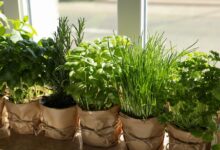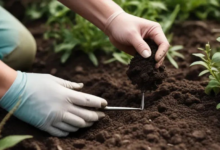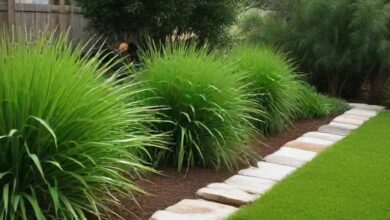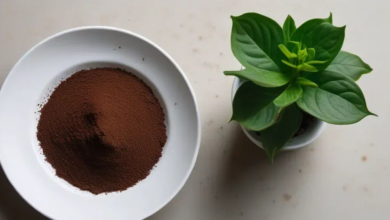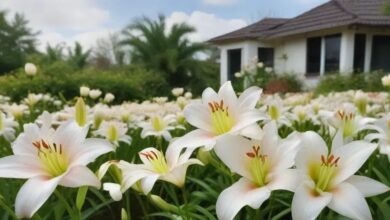The Rise of Edible Landscaping Beauty Meets Utility
Discover Rise of Edible Landscaping trends for 2025. Transform your garden with beautiful, productive plants that blend aesthetics with functionality.

The modern homeowner faces a compelling question: why choose between a beautiful garden and a productive one when you can have both? The rise of edible landscaping represents a revolutionary shift in how we think about outdoor spaces, merging ornamental beauty with functional food production in ways that challenge traditional gardening paradigms.
For decades, residential landscapes followed a predictable formula—manicured lawns, ornamental shrubs, and decorative flowers that demanded constant maintenance while offering little return beyond visual appeal. However, a growing movement is reshaping this conventional wisdom. Edible landscaping transforms yards, patios, and even balconies into thriving ecosystems that feed families while maintaining, and often surpassing, the aesthetic appeal of traditional ornamental gardens.
This innovative approach to landscape design isn’t merely a trend; it’s a response to pressing contemporary concerns. As climate change threatens food security, urban sprawl reduces agricultural land, and grocery prices continue to rise, homeowners are discovering that their landscapes can serve a dual purpose. The average American lawn occupies approximately 40 million acres—imagine the potential if even a fraction of that space produced food.
Edible landscaping goes beyond simple vegetable gardening. It’s a thoughtful integration of food-producing plants into traditional landscape designs, creating spaces that are simultaneously beautiful, sustainable, and productive. Picture a front yard where blueberry bushes replace boxwoods, where strawberry plants cascade from hanging baskets, and where herb borders provide both fragrance and flavor. This is the promise of edible landscapes—spaces that nourish both the eye and the body.
The movement draws inspiration from diverse traditions, including French potager gardens, where vegetables and flowers intermingle in formal patterns, and permaculture principles that emphasize working with nature rather than against it. Today’s edible landscapes incorporate these time-tested concepts while adapting them to contemporary lifestyles, creating outdoor spaces that are as Instagram-worthy as they are functional.
Edible Landscaping: A Modern Garden Revolution
Edible landscaping fundamentally reimagines the relationship between aesthetics and utility in outdoor spaces. Rather than segregating food production to hidden backyard vegetable patches, this approach celebrates edible plants as ornamental features worthy of prominent placement throughout the property.
The philosophy centers on several core principles. First, every plant should serve multiple functions—providing food, attracting pollinators, preventing erosion, or offering seasonal beauty. Second, edible gardens should integrate seamlessly with their surroundings, respecting neighborhood aesthetics while asserting their productive purpose. Third, these spaces should support local ecosystems, providing habitat for beneficial insects and wildlife while minimizing environmental impact.
This design approach differs significantly from conventional vegetable gardening. Traditional vegetable plots typically occupy separate, utilitarian spaces with plants arranged in straight rows for maximum efficiency. Edible landscaping, conversely, weaves food-producing plants throughout the entire property, treating them as design elements comparable to any ornamental specimen.
The movement has gained tremendous momentum over the past decade, driven by several converging factors. Environmental consciousness has increased demand for locally grown, pesticide-free produce. Economic pressures have made homegrown food more attractive. Social media has showcased the aesthetic potential of edible gardens, inspiring homeowners to rethink their landscapes. Additionally, municipal governments are increasingly relaxing ordinances that once prohibited front-yard food production.
The Multifaceted Benefits of Edible Landscapes
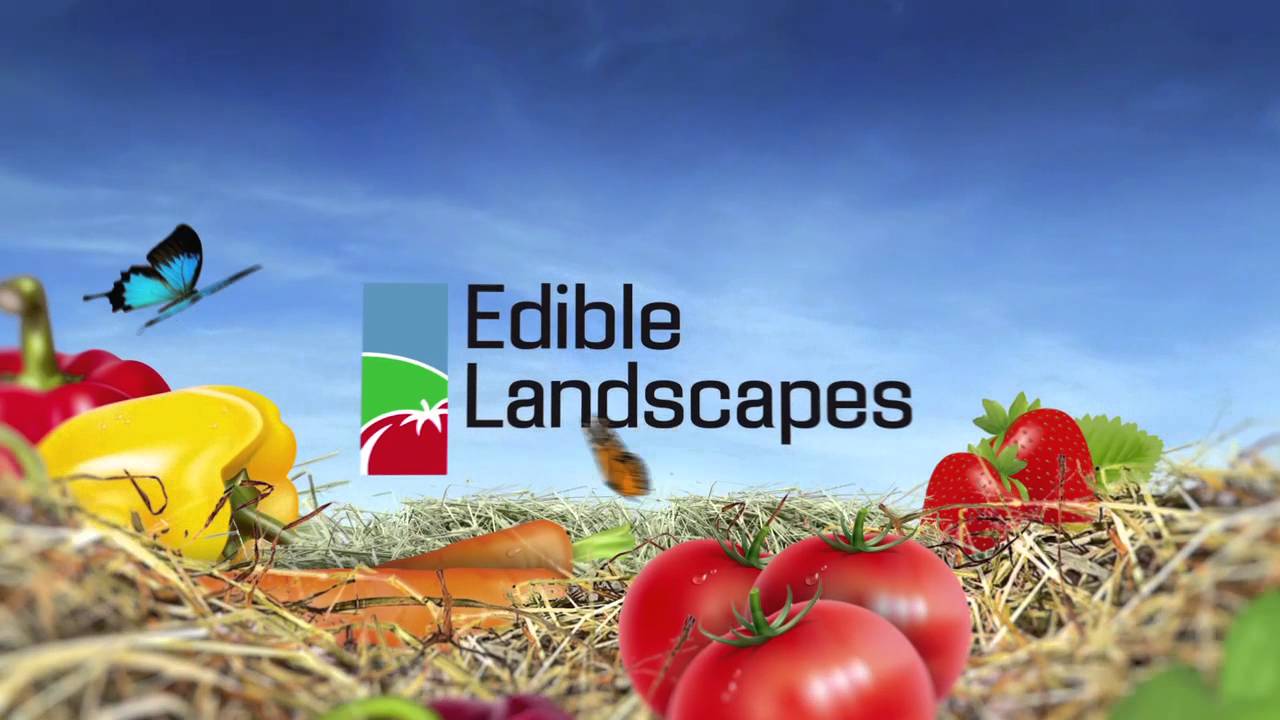
Environmental Sustainability and Ecological Impact
Edible landscaping offers profound environmental benefits that extend far beyond individual properties. Traditional lawns require substantial inputs—water, fertilizer, pesticides, and fossil fuels for maintenance equipment. These manicured expanses function as ecological deserts, supporting minimal biodiversity while demanding constant resources.
By contrast, edible landscapes create productive ecosystems. Fruit trees sequester carbon while producing food. Perennial vegetables build soil health through deep root systems. Native edible plants provide critical habitat for pollinators facing population declines. These gardens typically require less water than traditional landscapes, especially when designed with climate-appropriate species and efficient irrigation systems.
The reduction in food miles represents another significant environmental advantage. Produce in conventional grocery stores travels an average of 1,500 miles from farm to table, consuming fossil fuels and generating emissions throughout the supply chain. Homegrown food eliminates this transportation entirely, dramatically reducing the carbon footprint of your diet.
Economic Advantages and Food Security
The financial benefits of edible landscaping can be substantial. Initial establishment costs may equal or slightly exceed traditional landscaping expenses, but the ongoing return on investment is remarkable. A well-designed edible landscape can produce hundreds or even thousands of dollars worth of produce annually, essentially paying dividends while traditional ornamental landscapes represent pure expense.
Consider a single mature apple tree, which can produce 10-20 bushels of fruit annually—equivalent to several hundred dollars of organic apples at retail prices. Perennial crops like asparagus, rhubarb, and berry bushes produce for decades with minimal maintenance. Even smaller investments yield returns; a sunny window box of herbs can save $50-100 annually on grocery expenses.
Beyond direct savings, edible gardens provide insurance against food system disruptions. Recent global events have highlighted supply chain vulnerabilities, causing shortages and price spikes. Homeowners with established edible landscapes maintain access to fresh produce regardless of external disruptions, providing genuine food security.
Health and Wellness Benefits
The health advantages of edible landscaping extend beyond nutritional value, though that alone is significant. Homegrown produce offers superior freshness, with vegetables harvested at peak ripeness retaining maximum nutritional content. You control all inputs, avoiding pesticides and synthetic fertilizers common in conventional agriculture.
The physical activity involved in maintaining edible gardens provides excellent low-impact exercise. Gardening burns approximately 300 calories per hour while offering psychological benefits. Research consistently demonstrates that gardening reduces stress, improves mood, and enhances overall mental health. The satisfaction of harvesting homegrown food creates a profound connection to natural cycles and seasonal rhythms.
Children raised around edible landscapes develop healthier eating habits, showing increased willingness to try new vegetables and greater of food origins. This educational component represents an investment in lifelong health and environmental stewardship.
Design Principles for Successful Edible Landscapes
Assessing Your Space and Climate
Successful edible landscaping begins with thorough site analysis. Your specific conditions determines which plants will thrive and where to position them for optimal performance. Begin by mapping sun exposure throughout the day, noting areas receiving full sun (6+ hours), partial sun (4-6 hours), and shade. Most fruiting plants require full sun, though many leafy greens tolerate partial shade.
Soil assessment is equally critical. Test your soil’s pH and nutrient levels to understand what amendments might be necessary. Observe drainage patterns, identifying both soggy areas and fast-draining slopes. These characteristics guide plant selection and placement.
Climate considerations extend beyond USDA hardiness zones. Your area’s first and last frost dates, summer heat patterns, and rainfall distribution helps select appropriate varieties and plan succession plantings. Microclimates within your property—warm south-facing walls, cool northern exposures, frost pockets in low areas—create opportunities for growing plants that might not otherwise thrive in your region.
Selecting the Right Edible Plants
Plant selection represents the most crucial decision in edible landscaping. Choose species that perform triple duty: producing abundant food, offering ornamental interest, and thriving in your specific conditions with minimal maintenance.
Fruit trees serve as excellent landscape anchors, providing structure, seasonal beauty, and bountiful harvests. Apples, pears, cherries, and plums offer spectacular spring blooms followed by edible fruit. Many varieties maintain attractive form year-round. Dwarf and semi-dwarf cultivars suit smaller spaces while simplifying harvest.
Berry bushes function beautifully as hedge material or foundation plantings. Blueberries provide spring flowers, summer fruit, and brilliant fall foliage. Raspberries create effective privacy screens. Currants and gooseberries tolerate partial shade, filling challenging niches.
Perennial vegetables deserve prominent placement in edible landscapes. Asparagus ferns create airy texture in borders. Rhubarb’s large leaves make bold statements. Artichokes offer architectural presence with dramatic flower heads. These plants establish permanent positions, eliminating annual replanting.
Herbs excel as edging, ground covers, and container specimens. Thyme and oregano carpet sunny slopes. Lavender creates fragrant borders. Rosemary grows into substantial shrubs in mild climates. Most herbs tolerate poor soil and drought, making them ideal low-maintenance choices.
Annual vegetables integrate beautifully when chosen for ornamental qualities. Rainbow chard provides colorful stems. Purple cabbage rivals ornamental kale. Scarlet runner beans cover arbors with edible flowers. Tomatoes trained on decorative supports become garden focal points.
Creating Visual Interest Across Seasons
The best edible landscapes provide year-round interest through careful plant selection and strategic design. Spring brings fruit tree blossoms and early greens. Summer offers abundant harvests and lush growth. Fall delivers dramatic foliage from blueberries, grapes, and persimmons alongside ripening fruits. Winter reveals structural elements—attractive branching patterns, evergreen herbs, and decorative winter vegetables like kale.
Plan for succession by incorporating plants with staggered bloom times and harvest periods. This approach ensures continuous visual appeal and steady food production rather than overwhelming gluts followed by bare patches.
Practical Implementation Strategies
Front Yard Edible Landscaping
Front yards present unique opportunities and challenges for edible landscaping. These visible spaces often face homeowners’ association restrictions or municipal codes, yet offer ideal growing conditions with southern exposure and easy access.
Successful front yard edible landscapes emphasize ornamental qualities while incorporating productive elements. Frame your entrance with dwarf fruit trees rather than ornamental specimens. Replace traditional foundation plantings with blueberries or culinary herbs. Edge pathways with alpine strawberries or flowering herbs. These subtle substitutions maintain curb appeal while creating productive spaces.
Consider neighborhood aesthetics when designing front yard edible gardens. Maintain defined edges, vary heights for visual interest, and ensure neat maintenance. Well-designed edible landscapes often receive compliments from neighbors who don’t initially realize they’re viewing food production.
Vertical Growing and Small Space Solutions
Limited space shouldn’t prevent edible landscaping. Vertical growing techniques dramatically increase productive capacity in compact areas. Train vining crops like cucumbers, melons, and squash up trellises or arbors, freeing ground space for other plantings. Espalier fruit trees against walls or fences, creating living art while maximizing sun exposure.
Container gardens extend edible landscaping to patios, balconies, and driveways. Many vegetables thrive in pots, including tomatoes, peppers, lettuce, and herbs. Dwarf fruit trees produce well in large containers. Vertical container systems multiply growing space without expanding footprint.
Raised beds combine aesthetic appeal with improved growing conditions. They define spaces clearly, improve drainage, and facilitate intensive planting. Construction from attractive materials makes raised beds landscape features rather than utilitarian additions.
Integrating Edibles with Existing Landscapes
Converting established landscapes to edible versions need not require complete renovation. Gradual integration allows experimentation while minimizing risk and expense. Begin by identifying underperforming areas—struggling shrubs, high-maintenance lawns, or empty spaces.
Replace individual ornamental specimens with edible alternatives as needed. When an aging shrub requires removal, substitute a blueberry bush. Replace failed perennials with rhubarb or asparagus. This incremental approach gradually transforms your landscape without overwhelming your budget or schedule.
Maintenance and Care for Edible Landscapes

Soil Health and Organic Practices
Healthy soil underpins successful edible landscaping. Unlike ornamental gardens where appearance matters most, edible landscapes require soil that supports both plant health and human nutrition. Building soil fertility through organic methods ensures food safety while promoting ecosystem health.
Compost serves as the foundation of organic soil management. It improves soil structure, provides balanced nutrition, and supports beneficial microbial populations. Apply compost annually as mulch or work it into planting beds. Many homeowners find that composting kitchen scraps and yard waste provides sufficient material for modest edible gardens.
Cover crops and green manures improve soil between plantings. These plants prevent erosion, suppress weeds, and add organic matter when incorporated. Leguminous cover crops like clover fix atmospheric nitrogen, reducing fertilizer needs.
Water Management and Conservation
Efficient water management ensures sustainable edible landscaping. While food production typically requires more water than ornamental plantings, strategic design minimizes consumption. Group plants with similar water needs together, allowing targeted irrigation. Position water-demanding crops in naturally moist areas while situating drought-tolerant species on slopes or sandy soils.
Drip irrigation delivers water directly to root zones, minimizing waste through evaporation and runoff. These systems operate automatically, reducing labor while improving efficiency. Mulching conserves moisture, suppresses weeds, and moderates soil temperature. Apply 2-4 inches of organic mulch around plants, keeping material away from stems.
Rainwater harvesting captures precipitation for later use, reducing municipal water consumption. Simple rain barrels collect roof runoff, while more elaborate systems provide substantial storage capacity. This harvested water typically contains fewer chemicals than treated municipal supplies.
Pest Management in Edible Gardens
Managing pests without synthetic chemicals is essential in edible landscapes. Integrated Pest Management (IPM) strategies emphasize prevention, monitoring, and targeted interventions using biological controls and organic methods.
Begin by promoting ecosystem health. Diverse plantings support beneficial insects that prey on pests. Native flowering plants provide nectar and pollen for predatory wasps and beneficial beetles. Tolerate minor pest damage—small populations support beneficial predator populations.
Physical barriers prevent many problems. Row covers exclude insects from vulnerable crops. Copper tape deters slugs. Netting protects berries from birds. These simple interventions eliminate pest issues without chemicals.
When intervention becomes necessary, choose organic options. Insecticidal soap controls soft-bodied pests. Neem oil provides broader spectrum control. Bacillus thuringiensis targets specific caterpillar pests without affecting beneficial insects. Apply these treatments judiciously, targeting specific problems rather than applying preventively.
Overcoming Common Challenges
Navigating Regulations and Restrictions
Legal frameworks surrounding edible landscaping vary dramatically by location. Some municipalities encourage food production with supportive policies, while others maintain restrictive codes rooted in outdated aesthetics. Local regulations prevents conflicts with authorities or homeowners’ associations.
Research municipal codes regarding front-yard vegetable gardens, livestock, water collection, and fence heights. Many communities have relaxed restrictions recently, but others maintain prohibitions. If regulations seem unreasonable, consider advocating for policy changes. Many successful campaigns have overturned restrictive ordinances by demonstrating that well-designed edible landscapes enhance property values and community character.
Homeowners’ associations present additional challenges. Review your CC&Rs carefully and maintain open communication with boards. Emphasize your landscape’s aesthetic qualities and environmental benefits. Propose pilot programs allowing edible elements that meet specific design standards.
Dealing with Wildlife and Pets
Wildlife appreciation becomes complicated when animals view your edible landscaping as a buffet. Deer, rabbits, squirrels, and birds can devastate crops, requiring protective measures while maintaining ecological values.
Fencing provides the most reliable protection. Eight-foot fences exclude deer, though they require significant investment. Raised beds with hinged lids protect vegetables from rabbits while facilitating access for harvest. Netting draped over berry bushes prevents bird damage during ripening.
Dogs can damage edible landscapes through digging and compaction. Define paths clearly, install low fencing around sensitive areas, and provide designated digging zones. Most cats ignore vegetables, though they may damage plants while hunting. Raised beds typically solve feline issues.
The Future of Edible Landscaping
The rise of edible landscaping continues accelerating as environmental awareness, food costs, and health concerns drive adoption. Technology integration promises to enhance productivity and convenience. Smart irrigation systems optimize water use based on weather data and soil moisture. Garden planning apps facilitate design and planting schedules. Online communities share knowledge and inspiration.
Climate change will likely increase interest in resilient food systems, positioning edible landscaping as practical adaptation. Homeowners increasingly recognize that productive landscapes provide security while reducing environmental impact. Future developments may include greater municipal support, improved plant varieties specifically bred for landscape use, and integration with renewable energy systems.
The movement represents more than gardening trends—it’s a fundamental reimagining of how we inhabit landscapes. By choosing beauty that meets utility, we create spaces that nourish bodies, support ecosystems, and demonstrate that productivity and aesthetics need not conflict. Every front-yard apple tree and suburban berry hedge challenges assumptions about what landscapes should be, suggesting a future where every garden feeds both people and planet.
More Read: 15 Creative Lemon Grass Landscaping Ideas
Conclusion
The rise of edible landscaping marks a pivotal moment in sustainable living, proving that gardens can simultaneously delight the senses and fill the table. This innovative approach transcends simple vegetable gardening, creating sophisticated landscapes where beauty meets utility in every season.
Whether you’re replacing a single shrub with a blueberry bush or transforming your entire property into a productive paradise, edible landscaping offers profound benefits. You’ll reduce your environmental footprint while improving food security. You’ll save money while enhancing your property’s aesthetic appeal. You’ll connect with natural cycles while creating habitat for pollinators and wildlife.
The path forward is clear: our landscapes can and should do more. By embracing edible landscaping principles, we transform passive outdoor spaces into active contributors to household economy and environmental health. The movement continues gaining momentum, supported by growing recognition that the most beautiful gardens are those that nourish both body and soul.
Start small if you must, but start today. Replace one ornamental with one edible. Plant a fruit tree. Edge your pathway with herbs. Each step brings you closer to a landscape that truly serves your needs while honoring the earth. The future of gardening is here, and it’s delicious.
